Elephant Seals at Piedras Blancas

Viewing northern elephant seals at Piedras Blancas rookery along California’s central coast
Elephant seals spend most of their lives at sea, but come ashore at different times of the year to mate, give birth, molt and rest. They are fascinating to observe when they do come ashore, as I discovered as I watched northern elephant seals from the viewing platform at Piedras Blancas rookery along California’s central coast.
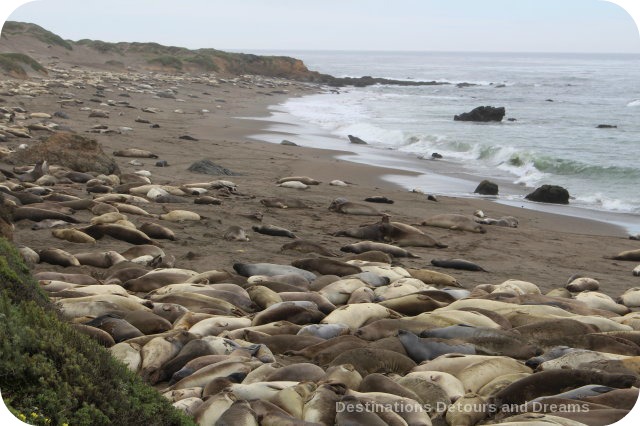
Elephant seals are unusual looking. I thought them to be beautiful and ugly at the same time. Female northern elephant seals weigh 900 to 1,800 pounds. Males weight 4,000 to 5,000 pounds. Pups are 3 to 4 feet at birth and weigh about 70 pounds.
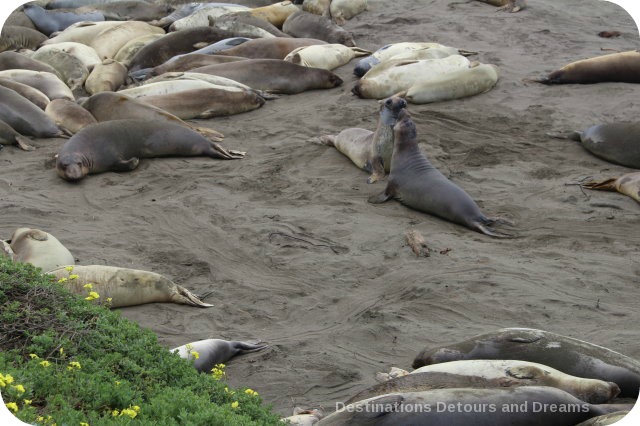
I watched the seals rest, spar with each other or inch their way along the sand on their bellies. Every so often a seal would flip sand over itself. They do this for different reasons, including providing sun screen or as a reaction to stress. The sounds they made were almost forlorn – a grunting cry. The smell was not particularly pleasant, although how much of it I smelt varied depending on where I was on the viewing station. It was not strong enough to make me cut my viewing short.
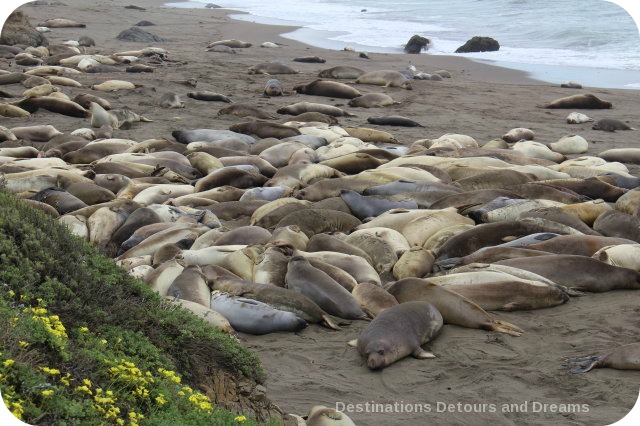
Elephant seals spend eight to ten months of the year in the ocean, where they spend the majority of their time deep under water. Their torpedo-shaped bodies reduce drag in the water. Their thick blubber insulates. Specialized eyes provide vision in low light and sensitive whiskers help locate prey. While at sea they are solitary. On shore they huddle together.
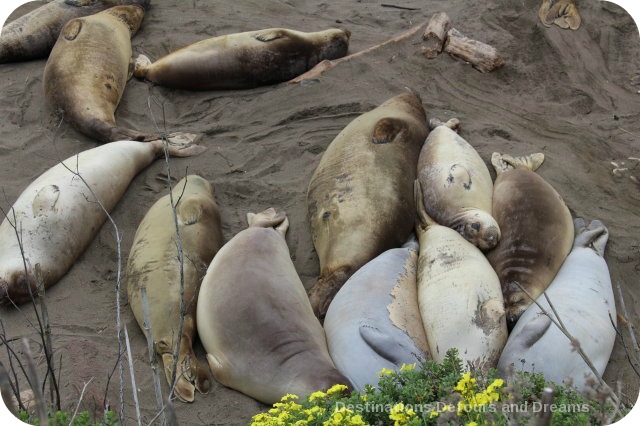
While onshore, with the exception of nursing pups, they do not eat or drink. I’ve included a couple of short videos below;
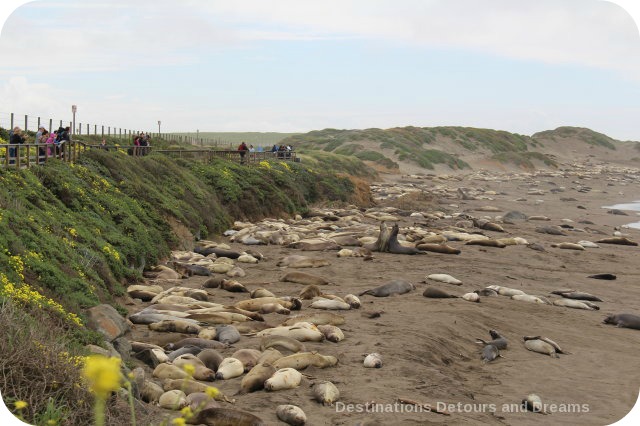
Peidras Blancas viewing areas are open every day. You are likely to see seals at any time, but numbers peak at three times during the year: late January, early May, and late October. December to March is birth and breeding season. Adult males begin to arrive in December and fight for dominance over pupping areas. In March and April, weaned pups hone swimming and diving skills. April to August is molting season. Juveniles and females molt in spring, mature males in summer. September through November sees seals too young to participate in breeding haul up to rest.
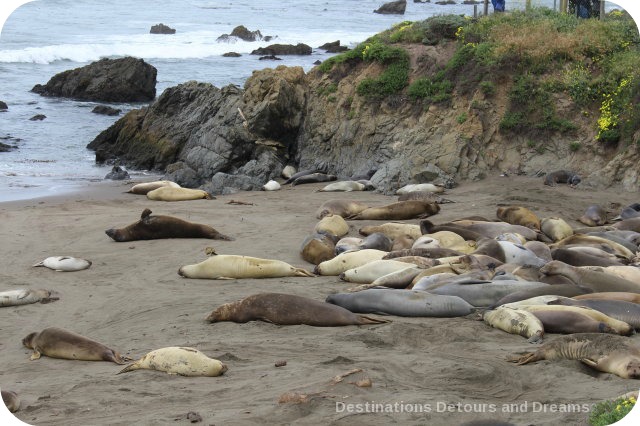
The Piedras Blancas rookery spreads out over six miles of coastline. The viewing areas are 90 miles south of Monterey, 5 miles north of Hearst Castle.
Never miss a story. Sign up for Destinations Detours and Dreams free monthly e-newsletter and receive behind-the-scenes information and sneak peeks ahead.
PIN IT
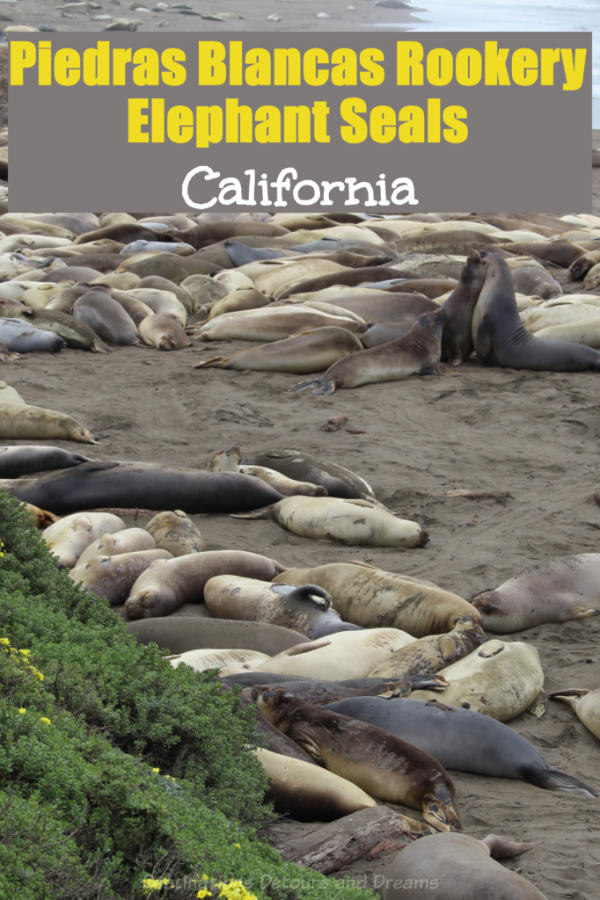

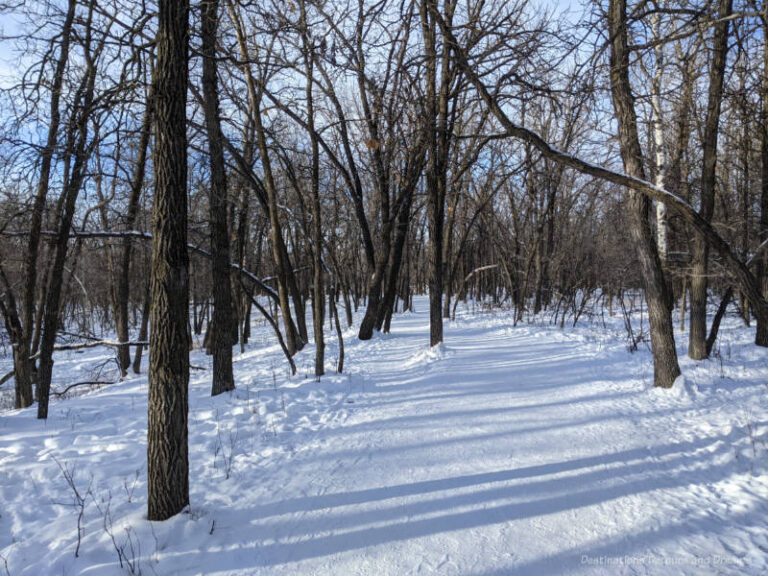


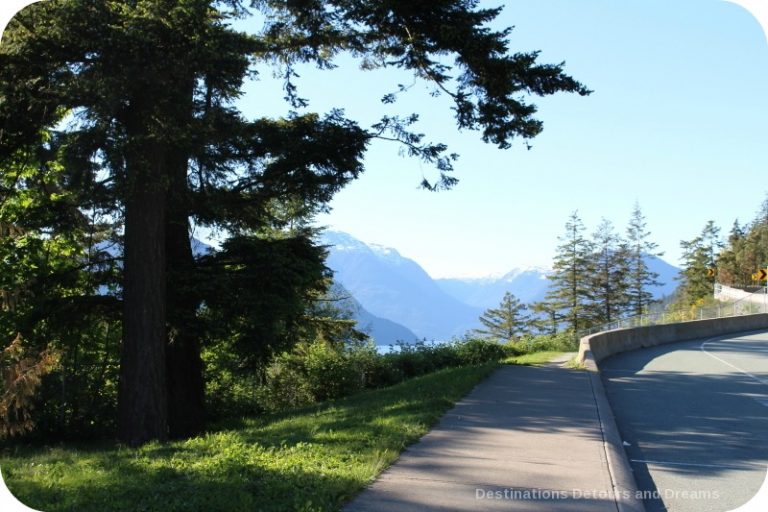
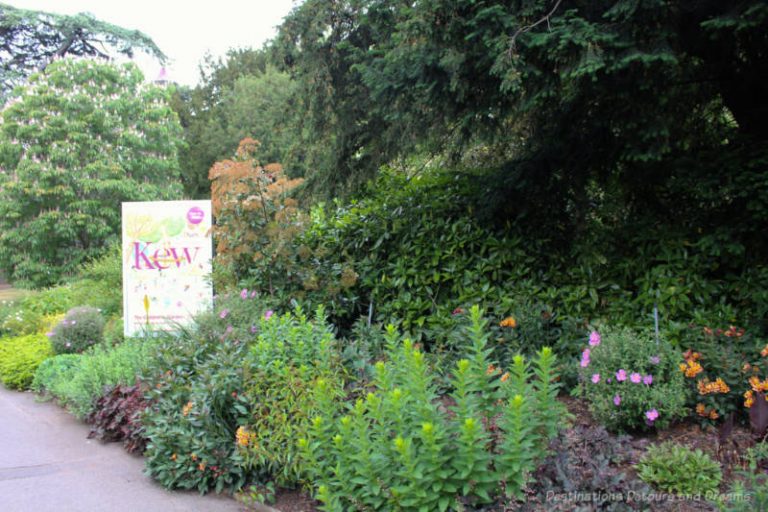
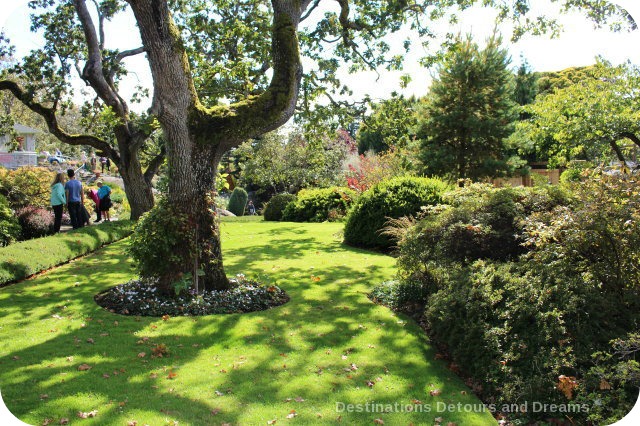
I’m pretty sure i could stand there forever watching these guys.
Ken, they are mesmerizing aren’t they?
I’ve only ever watched elephant seals a couple of times on the dock in Newport, Oregon. Their antics and noisy selves are quite funny.
Jeri, they are funny. I’d get startled every time one started grunting/howiling/crying.
It’s been awhile since I visited the central coast, I want to do a road trip again. Wonderful insight to these huge beasts – they are really majestic
Noel, they are majestic. This spring was the first time I’d ever seen them.
Hi Donna, we always stop and view the seals on our way down the coast. The smell is a bit much at times, but they are so fun to watch it’s worth it. We also like to view the seals at fisherman’s wharf in SF.
Susan, I’ve read that the strength of the smell varies with the wind. I think the wind was more favourable when we were there because the smell was not too much to handle.
Great photos, Donna! Took me back to the NATJA conference in California this snowy morning. 🙂
Thanks Linda. The conference was great, wasn’t it?
What a coincidence, Donna! I just wrote a post about this place a few months ago. Piedras Blancas is such an unique place. I have never seen so many elephant seals together anywhere else.
Anda, it definitely is a unique place.